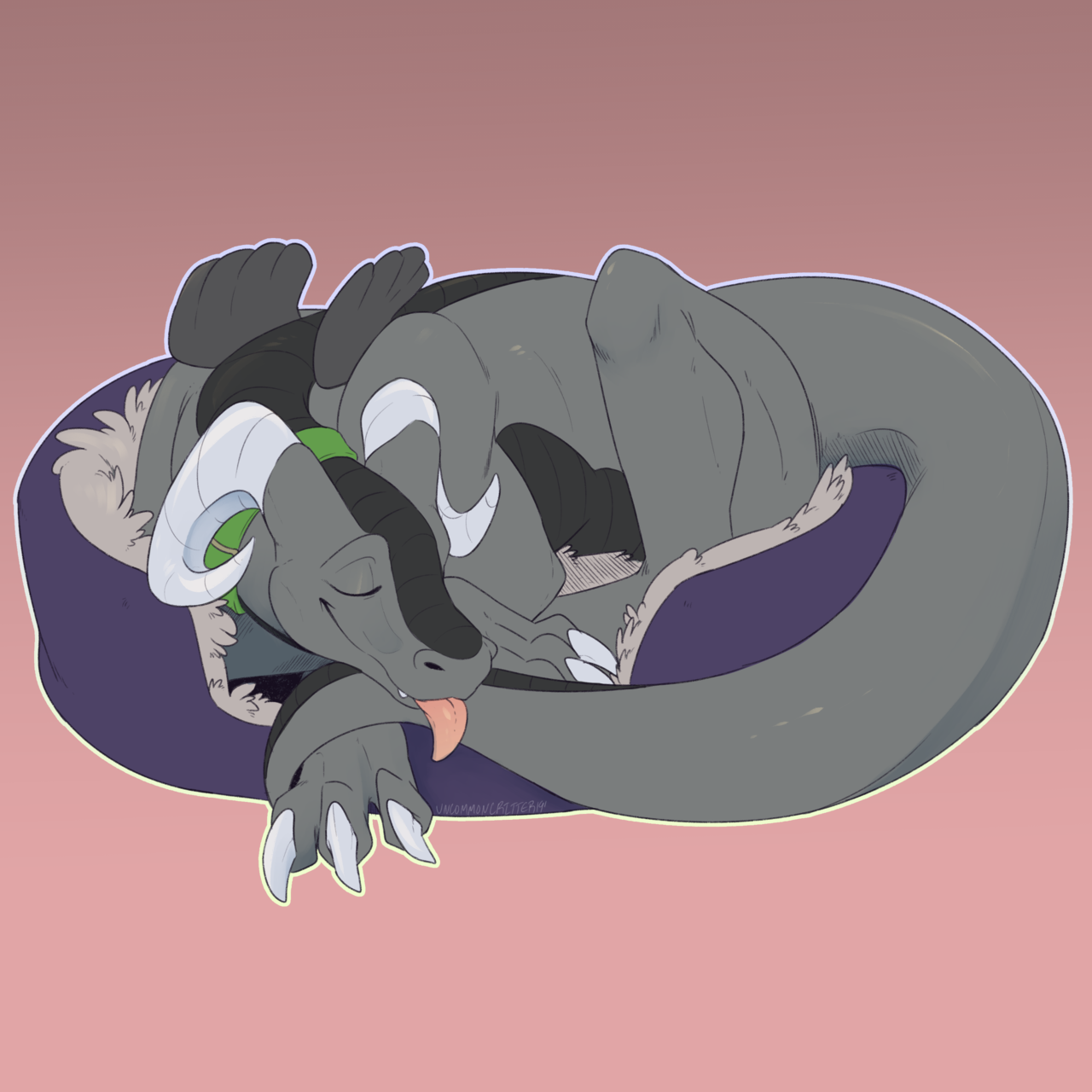House Dragon (5e Race)
House Dragon[edit]
| “ | I might be small, but don't you dare look down on me. | ” |
| —Byrdess the Tyrant, known house dragon | ||
Physical Description[edit]

|
|---|
| A house dragon in its natural habitat. Art by Zanna. |
House dragons are like your standard quadrupedal dragons, except in all the ways they aren’t. First of all, they only range from 2 to 3 feet in height to the shoulder. Second of all, they lack wings, the appendages regarded as being too dangerous for indoor conditions by their creators long ago. They have what can range from nothing at all on their backs, to tiny vestigial wings that couldn’t lift a fly. Finally, they lack a breath weapon; also deemed as far too dangerous. Their scales may be of any color and reflectivity; alignment tendencies were bred out of them long ago, so their alignment tends to lean towards whatever group of non-House Dragons they grew up with. Their horns also come in a variety of styles.
House dragons are naturally sturdy, mainly due to their 4-legged stance. This stance also allows them to gallop faster than one might expect from such a small creature, their lack of wings notwithstanding. Their draconic heritage gives them slightly more charisma as well; or is it from them being so cute and small instead?
History[edit]
House dragons almost certainly started as some bored wizard’s breeding project, as many species are wont to be. How do we make a dragon, they asked, that could fit in a house without burning it down? Years of experiments resulted in this offshoot of the dragon. While lacking many of the features of their iconic peers, house dragons found places in the world of man as beasts of burden, familiars, mounts, and pets… And a lucky few even set out on their own as adventurers.
Society[edit]
They tend to live with other species rather than form large groups of their own. They are a social race nonetheless, seeing little bound to the races they can live alongside.
House Dragon Names[edit]
House dragons tend to adopt the naming schemes of the culture they integrate themselves into, rather than have their own.
House Dragon Traits[edit]
| Small, quadrupedal dragons who aren't afraid to go out adventuring with their bipedal peers. Ability Score Increase. Your Constitution score increases by 2 and your Charisma score increases by 1. Age. House dragons reach maturity in about 10 years, and live to be about 50; not nearly as long as larger dragons, mainly due to the breeding process. Alignment. Alignment tendencies were bred out of your species long ago, so their alignment tends to lean towards whatever group of non-House Dragons you grew up with. Size. Your size is Small. Speed. Your base walking speed is 40 feet. |
| Feral Stance. You’re a quadruped. A feral. A four-legger. Whatever you want to call it. Your forepaws have opposable thumbs, allowing you to manipulate objects like your peers; however, your stance definitely makes many tasks harder for you. You cannot properly wield any weapons made for bipedal folk. Weapon proficiency bonuses do not apply to your attacks with such weapons. You cannot use two-handed weapons or dual-wield in combat. You cannot don armor made for bipeds; armor specifically made for quadrupeds, that is, barding, needs obtained if you wish to wear it. (Any armor you get as part of starting a new character can be considered barding.) Wielding shields does not grant AC bonuses. Finally, many actions are harder for you because you normally don’t have free hands. Actions like loading a weapon, drinking a potion, or casting any spells with material or focus components, requires you to retrieve them from one of your pack bags, around your neck, or something similar. These tasks cost 5 feet of movement. |
| Natural Defenses. Your scales, while soft to the touch compared to normal dragons, still provide a bit of protection. You have +1 to your AC. |
| Natural Offenses. Lacking the ability to wield a weapon, what are you to do? Oh, that’s right, you have built in weapons; a claw attack and a bite attack. They are considered to be an unarmed attacks. They do 1d6+Strength damage. Your claw attack does slashing damage, while your bite attack does piercing damage. Your claw attacks have the finesse property. |
| Big Eater. House Dragons are known to eat almost as much as their larger counterparts, although they lack the ability to digest almost anything like them. You gain advantage on checks to resist poison and disease transmitted via food and drink you consume, and you gain advantage on checks to consume large amounts of food/drink, or to eat questionably digestible food/drink. |
| Languages. You can speak, read, and write Common and Draconic. |
Random Height and Weight[edit]
| Base Height |
Height Modifier* |
Base Weight |
Weight Modifier** |
|---|---|---|---|
| 2′ 0'' | +1d12 | 100 lb. | × (1d12) lb. |
|
*Height = base height + height modifier | |||
Variant: Coward Mode[edit]
You don’t want to struggle with constant move speed penalties and piles of loot you can’t use? You coward. If you really want to choose this path, you may use the following variant rules:
- All House Dragons may apply their proficiency bonuses to a single one-handed weapon, by wielding it with their mouth. This does not affect their ability to speak (although they might sound funny while trying to speak).
- All House Dragons may fulfill somatic components by waggling their tail around, and may fulfill material components by merely having them on their person. No longer do movement speed penalties gained via Feral Stance apply.
Back to Main Page → 5e Homebrew → Races



